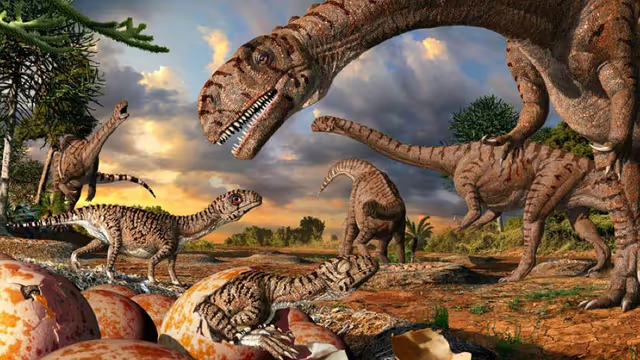Tag: Fossils
Events:
Articles:

April 11, 2012
Taking a Micro-look at Coral Relationships
Corals grow in shapes specific to their surroundings, but this plasticity often masks evolutionary relationships. One must look closer...Sahale Casebolt, a graduate student at Virginia Tech, is comparing micro-features of fossil and modern corals with their DNA sequences to reveal evolutionary relationships.

February 21, 2013
Did “Invasions” Occur in the Fossil Record?
A panel of evolutionary biologists during Ithaca Darwin Days reflects on what we can learn about species invasions from the fossil record.Are human-facilitated invasions today the same kinds of events as Earth-facilitated changes in species distributions in the distant past? Are all species invasions “destructive”? Does invasion shut down speciation? Do we really know what the rate of invasion was in the past? In most instances, we simply don’t know.

February 12, 2013
Charles Darwin: The Legacy
If he were still alive today, Charles Darwin would be proud of us. It isn’t just science. Literature, technology, music, politics, religion—you name it—the theory of evolution is pervasive in our society, and who do we have to thank for that? Charles Darwin. If he were still alive today, Charles Darwin would be proud of us. It isn’t just science. Literature, technology, music, politics, religion—you name it—the theory of evolution is pervasive in our society, and who do we have to thank for that? Charles Darwin.

October 2, 2012
Dawn of the Deed, Part 1: Down and Dirty in the Devonian
In Part I of a series, author John Long describes his passion for placoderms – and his sudden discovery of live birth in these ancient fish.The story of unraveling placoderm reproduction begins with a 380-million-year-old fossil from the Gogo site, Western Australia, that yielded the oldest evidence of live birth in vertebrates.

March 13, 2012
Prehistoric Preschool
Paleontologists have discovered the oldest dinosaur nursery on Earth.

March 26, 2012
Home Sweet Mollusk
Paleontologists have found three tiny lobster fossils inside the fossil shell of a Jurassic mollusk.

March 19, 2012
An Ancient Animal Masquerades as a Flower
Lorna O’Brien, a paleontologist at the University of Toronto, has been studying an ancient animal that bears an uncanny resemblance to the flower that we associate with springtime.

March 13, 2012
Not Your Average Scrubbing Sponge
Scientists have uncovered what they believe is the earliest ancestor of all animals.

May 8, 2012
Human Ancestor Was A Tree Climber
The famed australopithecine “Lucy” might have run into more than just her own species when she roamed Eastern Africa 3.2 million years ago.

July 12, 2012
Lost and Found: An Ancient Forest
An ancient forest has been uncovered in a mine in Southern Illinois.

August 9, 2012
Found: Fossil Flatfish
A new discovery by Matt Friedman at Oxford University is providing paleontologists with clues to the flatfish’s seemingly unsolved history.

September 14, 2012
The Search for the Origin of Life
Recent scientific efforts are bringing us closer to an understanding of the earliest life on Earth, and to the fielding of a theory that explains the dawn of our earliest ancestor.The cases of the earliest discovered evidences for life on Earth, if biological in origin, constrain the timing for the emergence of life to sometime before 3.4 billion years ago.

January 28, 2013
Snagging a Date 125 Million Years Ago: the Avian Way
Sexual dimorphism, an essential piece of many species’ survival, is the difference in morphological appearance between males and females of the same species. Think Lion King: Simba’s father sported a big bushy orange mane, whereas his mother, also a lion, had no showy neck fur to speak of.

January 30, 2013
Bigger Isn’t Necessarily Smarter: An Enormous Dino With a Tiny Brain
The biggest creatures to ever walk the Earth had brains smaller than ours.

February 4, 2013
Prehistoric Poop Pleasantly Pleases Paleontologists
What excites paleontologists just as much as finding a nice, old dinosaur skeleton? Finding a nice, old dinosaur dung heap, of course.

our newsletter
